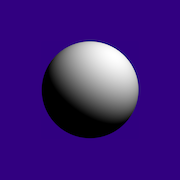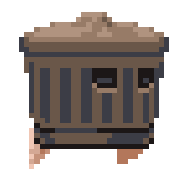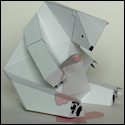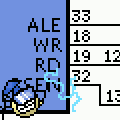|
What started as a some scripts and a basic php page to simplify allocating and connecting audio channels over a network of Linux machines, has ended up a Python based modular REST controlled server application with a user-customisable JS front end to build custom controls for multimedia environments. Here's some screens of the web interface controlling various audio/video/multimedia environments: A workspace to control a single area, with two audio zones and a video screen.  A multi-room workspace, controlling four different video screens on four different nodes, with drop downs to choose what's showing on each screen and buttons to open media players and link to other pages.  Mobile scaled workspaces.  A workspace with media player controls, drop down multi-zone audio selections, and sliders for zone gain control. 
|
|
|
|

|
| # ? May 9, 2024 09:57 |
|
Grump posted:Here's my proof-of-concept for a dinky little drink suggestion app that I've been working on live The detail screen is fleshed out, you can search by cocktail name, login, contact form, and forms to create new ingredients and cocktails. Go try it! (I still have to go through the grueling process of adding all the cocktails) 
teen phone cutie fucked around with this message at 04:29 on Jul 3, 2019 |
|
|
|
Grump posted:Updates on https://barcart.net. The detail screen is fleshed out, you can search by cocktail name, login, contact form, and forms to create new ingredients and cocktails. Go try it! Does it recognize that if I have "an orange", I can use it to make juice, peels, slices etc?
|
|
|
|
Loezi posted:Does it recognize that if I have "an orange", I can use it to make juice, peels, slices etc? Lol nope and itís because iím not good at database design or backend development in general
|
|
|
|
Grump posted:Lol nope and it’s because i’m not good at database design or backend development in general It's my pet peeve with these kinds of apps so apparently you are on-par with the pros! 
|
|
|
|
Kennel posted:This came up in the chart & graph thread and the people seemed to like it, so I'll repost it here. There's a chart & graph thread?? Anyone have a link? Search is not finding it..... Also, those images are awesome.
|
|
|
|
Lumpy posted:There's a chart & graph thread?? Anyone have a link? Search is not finding it.....
|
|
|
|
SupSuper posted:Here you go: https://forums.somethingawful.com/showthread.php?noseen=0&threadid=3745614&perpage=40 Thank you!
|
|
|
|
Grump posted:Lol nope and itís because iím not good at database design or backend development in general You just need a three column table: id, item, derived. Then you just throw a ton of one-way graph edges in there of things you can derive from something, and it's multi-row relations: Orange -> Orange Peel Orange -> Orange Juice Orange -> Orange Zest Orange -> Orange Slice etc. You can make many rows with 'Orange' because the id column handles uniqueness. Then you just pull all rows from that table for each thing you have, and add those related things to what you have, or keep it separate in a 'derived' set, or even iterate, but probably just a few times else you could make or have to avoid loops.
|
|
|
|
I updated my SDF fractal hack branch of the pathtracer I work on a whim last Friday, and fixed a couple of leftover bugs over the weekend. It's faster, and unlike the shots I posted last time there aren't a bunch of epsilon issues causing half the rays to go straight through the fractal. I've been running high detail renders overnight all week. Red anodized aluminium mandelbox:  Tiny walnut mandelbox :  My shading is a bit limited since I didn't really hack in any sort of UV projection or iteration count coloring like people normally do so I'm limited to fixed colors or procedural volumetric textures. I also accidentally interrupted the wood render early so that image isn't really converged. Still pretty happy with the output. Now I just gotta make a GPU implementation and add better detail controls so interaction and setting up shots isn't quite as pants...
|
|
|
|
I'm writing a a ray tracer (a port of Ray Tracing: the Next Week to another language). I put together part of the famous Cornell box scene. This is what my ray tracer produces when run sequentially or on the GPU on my Linux system: This is what it produces when run on macOS with OpenCL (using either of the two GPUs on the Macbook):  I have no idea where that dirty-concrete look comes from, but I kind of like it. I use a deterministic RNG that should be the same on all platforms.
|
|
|
|
Athas posted:I'm writing a a ray tracer (a port of Ray Tracing: the Next Week to another language). I put together part of the famous Cornell box scene. This is what my ray tracer produces when run sequentially or on the GPU on my Linux system: The striations youíre seeing are almost certainly due to correlation from multiple paths getting the same random numbers. You can either wrap your RNG in a mutex or something, or use a differently seeded generator per thread. Multithreaded RNG bugs are super dependent on timing and often donít show up in obvious ways, so that's probably why youíre only seeing them on one platform.
|
|
|
|
The wrong one has so much character! Now you need to figure out what is happening so you can do it on purpose.
|
|
|
|
Yeah, it has a painterly style. It's very cool.
|
|
|
|
I wonder how it would appear animated? Meaning, not moving the camera, but a still shot of the same scene.
|
|
|
|
steckles posted:Sweet. Everyone should write a path tracer. You were quite right: I had actually fixed the bug in the library I use for RNGs, but I forgot to update it on macOS. I wrote up my ray tracer experiences along with a pretty picture. My interest is more in the code than in cool scenes, so I'm just using the same final scene as the book I followed: Now I need to figure out how to reproduce that concrete look without just using a buggy RNG!
|
|
|
|
Porting an old somewhat popular Mac game. Got to the title screen! (Might seem minor, but getting this far is probably 20%-30% of getting the whole thing working...) 
|
|
|
|
OneEightHundred posted:Porting an old somewhat popular Mac game.
|
|
|
|
OneEightHundred posted:Porting an old somewhat popular Mac game. You're doing God's work. One of the best Glider games.
|
|
|
|
Update us when its finished. That garfield-lookin' rear end in a top hat and I have a score to settle. e: I looked it up on youtube and the version I had is apparently different from that one. Polio Vax Scene fucked around with this message at 00:35 on Dec 24, 2019 |
|
|
|
|
It'll probably be 100% playable a while before it's completely finished. A lot of the remaining work is rolling a window manager to deal with all of the prefs dialogs and editor mode, changing the resolution (ideally while in-game, which I think the existing code doesn't support), enough of a QuickTime subset to get the TVs working, other random things like gamepad support, and purging a few things with questionable IP status. The depot is here if you want to follow it or take it for a whirl: https://github.com/elasota/GlidePort I'm guessing it'll be mostly playable - but with a lot of broken draw functions - by the end of the week, and most of the draw functions fixed by the new year. OneEightHundred fucked around with this message at 08:13 on Dec 25, 2019 |
|
|
|
Project update, old image, scroll right if you have a small screen. No live data yet, too cheap. http://ahyoomee.miru.hk/zignage-sports7/build/default/www/3840-bloom.html Or, for regular version with logos: http://ahyoomee.miru.hk/zignage-sports7/build/default/www/3840-basis.html This took a long time to get to and derived from several other projects. The server side is nothing special, just a WebSocket streaming out sports stats via polling a website. The client side is a beast using a variety of oddly named projects:
You can upload very basic SVGs through THREE.js to render on the GPU however all the logos I have tend to look rear end due to additional SVG features that presumably don't translate. code:Fonts can also be rendered as shapes in THREE.js but tends to be terrible on layout, conformant sizing, and surprisingly performance. Render performance seems to be sub-1ms per frame. A fullscreen pass for bloom or FXAA however requires a decent GPU for large screen sizes. I tried to use FXAA on the Basis encoded logos but just ended up giving the fonts weird edges and not really doing anything to the logos, go figure. MrMoo fucked around with this message at 03:21 on Jan 4, 2020 |
|
|
|
Here's a screenshot of that unpractical Python interpreter project I've been working on. I finally got it to a point where I feel like I can show it off with some pride to people that could appreciate what it means. I have two contexts running in the environment. The first one is a Python script alternating the "Random Blips" in the first and second positions in an infinite loop with a sleep. This sleep doesn't block the application. The second is the REPL that's running stuff on demand. You can see it at the end engage with the mock dialog subsystem to post its own dialog. The result is the index in the list of choices that I had selected. The REPL will block when it's doing a blocking operation, but you see that the loop in the background keeps running. This is all happening in a custom-built interpreter I wrote in C# that's running in one thread and using async-await under the hood to switch the interpreter between different frames as the different frames block/unblock. My ultimate goal is to embed this into Unity to get some debug consoles up while also enabling Python scripting. I don't have much of the language implemented at all but clearly I can run a loop with some basic logic.
|
|
|
|
Front-end project work, so not as cool as some of the other stuff in the thread but I've been working on something only SA would probably enjoy to play around with Vue.js. I'm a big dumb nerd who likes reading Let's Plays and the mobile experience of the LPArchive isn't fantastic. So I've put together a basic LP reading web app so I can read stuff on my long commutes on my phone, just scraping the HTML from the LPArchive pages, it also has a dark mode! Is it possibly the worst way to make something from existing content? Absolutely, but it works enough to make mobile LP reading possible.   This is the first time I've made anything using dynamic Vue Router routes so it was a fun and useful project to get myself across that. No LP searching yet, it just grabs the LP Master List from the site itself and displays that as the initial page and it's fuckin' mess:  Possibly the most useless personal project I've worked on but it's fun!
|
|
|
|
I'm developing a procedurally-generated pixel art skyline generator. It's still far from done, I just wanted to show off some screens and see if anyone has any questions/suggestions:   Done in Unity/C# - initially the project was in Javascript on HTML canvas but JS's object handling deficiencies were annoying me too much.
|
|
|
|
That's really cool! Works well for a simple effect. I think the one thing that breaks the illusion for me right now is that buildings I read as in the same plane can have wildly different floor heights and room scales, sometimes smaller than buildings "behind" them. Dunno if you have a depth generated -- would be neat for parallax and things -- but if this is straight painter's algorithm then it seems to me like the first batch of buildings should be drawn as dimmer and with smaller dimensions to read at distant, then make them larger and brighter as they get "closer".
|
|
|
|
Xerophyte posted:That's really cool! Works well for a simple effect. Thank you! The three layers are individual sprites, it currently does a basic parallax motion but since it's not yet clipped to the pixel grid, it moves at sub-pixel resolution and looks odd, which is something I'm going to fix soon. Each layer is aware of its 'zIndex' and draws from a weighted RNG table for all of the random elements in the design. There are different weights per layer, so the rear buildings tend towards more tiers with smaller windows, but a rear-layer building could still roll a maximum-size window. Here's a screenshot with the weights skewed much more heavily towards large windows at the front and small at the back (also the WTC apparently):  Thanks for the suggestion - I will review the weight tables like you suggested.
|
|
|
|
Randomizing the intensity of the lights in the windows could probably be nice as well. It's a bit static right now. Also, there's something about the window sizes being so different that looks off to me. Seems like it should be true to life though but to me it doesn't look that great. Cool project!
|
|
|
|
Pigmassacre posted:Randomizing the intensity of the lights in the windows could probably be nice as well. It's a bit static right now. No idea what it would look like but maybe randomly modify the base window light color on a per-building basis to be a bit more blue or red.
|
|
|
|
Pigmassacre posted:Randomizing the intensity of the lights in the windows could probably be nice as well. It's a bit static right now. I get what you mean here, I've experimented with tweaking window sizes, making them a little more distinct and uniform per layer. I also removed two of the window variations, the vertical double and the quad connected windows, which in practice made some of the windows look a little chunky. I think it looks better like this, thank you for the suggestion. Sereri posted:No idea what it would look like but maybe randomly modify the base window light color on a per-building basis to be a bit more blue or red. I was actually already doing exactly this, but variations were hard to see. I've changed them up a bit in these shots, as well as varying window brightness just a touch. I've also tried varying the massive 'moon' colour for some contrast. Some other changes were brightening the city layer in general while increasing contrast between the layers and adding a divider between the land and water.   
|
|
|
|
Looks nice! Like Xerophyte pointed out, I think getting the depth cues right is important for this kind of scene. I think a little bit of ground haze could help. An economical implementation would be a straight vertical gradient with a higher blending factor closer to the ground and farther from the observer. City haze is also an opportunity to add some color (sodium streetlight/neon goodness if you want to go in that direction).
|
|
|
|
Looks neat Remember that ceiling heights are somewhat standardized across buildings
|
|
|
|
Dumb Lowtax posted:Looks neat There's definitely a realistic range, but that range could be larger than many think! Vista Tower in Chicago is 101 floors in 1191 feet, for 11.8 ft/floor. One Vanderbilt in NYC is 1301 feet and 67 floors, for 19.4 ft/floor. Of course these measurements are complicated by the ways they actually measure these buildings. I tried to find measurements of top usable floor, but YMMV.
|
|
|
|
Hello all. It's been a while since I posted anything, but I always seem to be working on a few embedded projects here and there. I've been messing around with the Super Nintendo and Super Famicom for a few years now, and I recently have been studying the Satellaview add-on for the SFC. With the impending expiration of the Satellaview patent, I had decided to start researching it to maybe engineer a replacement for it with modern parts. Now that the patent actually has expired, the first step was to get one of these bad boys for reverse-engineering and comparison purposes. I had one shipped over to me from Japan:   Through some awesome dumb luck, the 8M memory pack included with my Satellaview unit contained the previously undumped Satellaview title Tactics Ogre (BS Version)! I contacted the folks over at The Video Game History Foundation to notify them and request their assistance. After a few introductions with people that could help, I bought some dumping hardware, made a verified-good memory pack dump, and submitted it for archival and release:   https://www.youtube.com/watch?v=tCyhdSikNho Now that the long-lost game was saved for posterity, it was time to get to work. I took some measurements for the proprietary expansion port connector on the SFC and SNES:    I ordered a few connectors from Digikey and got to work cutting and sanding them in various configurations before I got something that matched the size and pitch of the connector. I soldered on a wiring harness, padded the edges with folded paper for a snug fit, and began capturing the bus traffic coming from the SFC expansion port with my logic analyzer:   Since I only want my makeshift Satellaview clone to respond to a specific range of memory-mapped I/O registers, I needed a way to filter bus traffic so that I'm not overwhelmed by all of the chatter. Gating out the address lines to filter the traffic was needed, but I didn't want to fiddle with a bunch of 7400-series logic gate ICs. So, I used the pretty awful WinCUPL tool to design an MMIO address filter on an Atmel ATF1504 using CUPL:  The simulations and tests look good so far, but I'm still waiting on an adapter for PLCC ICs so that I can wire a socket into the final design and skip adding an on-board JTAG programmer for the CPLD. I'll just pop the CPLD out of the socket for reprogramming. The general idea is that I'm using the CPLD to filter traffic to a manageable level. Whatever makes it through the filter goes into a BeagleBone Black for processing. I can use firmware running on both of the two Programmable Real-Time Units (PRUs) on the BBB to handle the GPIOs making up the address and data buses. A kernel driver handles the actual device logic. I can mux out just enough pins on the BBB to support the buses and a few control lines using PRU-enhanced GPIOs. Those pins toggle in a single PRU clock cycle (5 ns). Slower GPIO signals (like RESET) can be handled using a standard GPIO by the kernel driver. I've played around with the PRUs to talk with SNES gamepads in the past, and they are fast. In fact, I just had an article on PRU interfacing published in issue #28 of HackSpace Magazine. You can download a free PDF copy of the magazine here, but I haven't found a retail place here in the US that sells paper copies (since HackSpace is a UK-based magazine). The article is on pages 104-109:  That's the latest and greatest! I chip away at this stuff here and there when I have time. I'm still in the breadboarding/prototype stages with most of it, but I'm taking pictures as I go for my own notes and for an eventual write-up down the road (if it all pans out).
|
|
|
|
Awesome! Iím glad youíre back, your projects are always cool. I canít quite read the Logic screenshot but it looks like youíve got a bus analyzer active. Is it using a common protocol?
|
|
|
|
Not to gloss over all the cool tech stuff you've done, but Tactics Ogre is legit one of my favorite games. What's the difference between the SFC and the BS versions?
|
|
|
|
|
csammis posted:Awesome! Iím glad youíre back, your projects are always cool. Neurion posted:Not to gloss over all the cool tech stuff you've done, but Tactics Ogre is legit one of my favorite games. What's the difference between the SFC and the BS versions? 
|
|
|
|
I made a small Angular app to let people disassemble Intel 8080 CPU binaries online... http://8080dasm.slackerparadise.com  I'm not sure how this would be useful to anyone, but it's letting me learn Angular and about emulators at the same time. v
|
|
|
|
 Level editor 95% ported. Only thing that doesn't work is the map scroll bars and resizing. Only 3 things left on the alpha release milestone, which I'll probably knock out next weekend.
|
|
|
|

|
| # ? May 9, 2024 09:57 |
|
Hey! More progress on the Satellaview project! I was putting most of my effort into the hardware side of things to flesh out the details of the components and prove that the design is viable:   The amount of time you can spend fiddling around with PCB layout is ridiculous. Luckily, there are some good open-source tools that help out a bunch:  After about 10 hours of work, I came up with a layout scheme that only used a few vias and looked fairly decent (though I did have to extend the cape PCB a bit to get it all to fit nicely):   Since the design fits in the space that I needed, I decided to move forward with the schematic as-is. I got to work breadboarding it out, and I wrote some firmware, device tree overlays, and a Linux userspace test program to make sure everything was getting from point A to point B like I expected:   I've now got the filtered address bus being passed into the BeagleBone Black via a 3.3V line level converter, the bus signals sampled by a PRU, and the resulting address pushed over to Linux userspace. There's a lot of debugging and details I'm omitting, but trust me... it was quite a bit of effort to get things as far along as they are. I'm pretty happy with my progress so far, anyway!
|
|
|











































